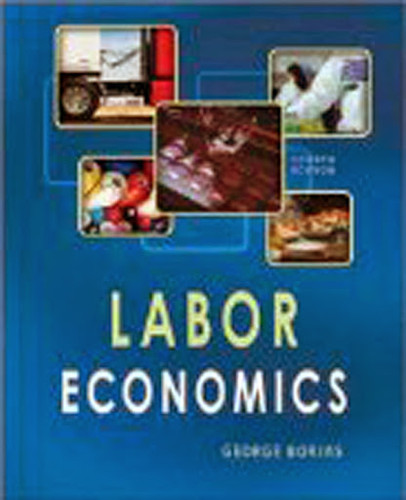
Navigation menu
Labor Economics Some JEP articles recommended for classroom use Labor Economics often had a high degree of overlap with courses in Health Economics, Education, and Household Economics, ing wage differentials and labor market imperfections. 2. Uses of Human Capital The standard approach in labor economics views human capital as a set of skills/characteristics that increase a worker’s productivity. This is a useful start-ing place, and for most practical purposes quite su fficient. Nevertheless, it may be The following facts establish the importance of labour: 1. In Active and Living Factor of Production- The land and capital do not play any active role in production. 2. Natural Resources and Capital have no Identity without Labour- Land and capital would lay

Some JEP articles recommended for classroom use
· Labor is the amount of physical, mental, and social effort used to produce goods and services in an economy. It supplies the expertise, manpower, and service needed to turn raw materials into finished products and services. In return for their labor, workers receive a wage to buy the goods and services they don't produce themselves Labour economics involves the study of the factors affecting the efficiency of these workers, their deployment between different industries and occupations, and the determination of their pay. In developing models for the study of these factors, this section deals with the labour force of contemporary industrialized economies The following facts establish the importance of labour: 1. In Active and Living Factor of Production- The land and capital do not play any active role in production. 2. Natural Resources and Capital have no Identity without Labour- Land and capital would lay

Chapter 1. Introduction to Labor Economics Chapter 2. Labor Supply Chapter 3. Labor Demand Chapter 4. Labor Market Equilibrium Chapter 5. Compensating Wage Differentials Chapter 6. Education Chapter 7. The Wage Distribution Chapter 8. Labor Mobility Chapter 9. Labor Market Discrimination Chapter Labor Unions Chapter Incentive Pay ing wage differentials and labor market imperfections. 2. Uses of Human Capital The standard approach in labor economics views human capital as a set of skills/characteristics that increase a worker’s productivity. This is a useful start-ing place, and for most practical purposes quite su fficient. Nevertheless, it may be The following facts establish the importance of labour: 1. In Active and Living Factor of Production- The land and capital do not play any active role in production. 2. Natural Resources and Capital have no Identity without Labour- Land and capital would lay
The following facts establish the importance of labour: 1. In Active and Living Factor of Production- The land and capital do not play any active role in production. 2. Natural Resources and Capital have no Identity without Labour- Land and capital would lay · Labor is the amount of physical, mental, and social effort used to produce goods and services in an economy. It supplies the expertise, manpower, and service needed to turn raw materials into finished products and services. In return for their labor, workers receive a wage to buy the goods and services they don't produce themselves Chapter 1. Introduction to Labor Economics Chapter 2. Labor Supply Chapter 3. Labor Demand Chapter 4. Labor Market Equilibrium Chapter 5. Compensating Wage Differentials Chapter 6. Education Chapter 7. The Wage Distribution Chapter 8. Labor Mobility Chapter 9. Labor Market Discrimination Chapter Labor Unions Chapter Incentive Pay

Labour Economics is devoted to publishing international research on empirical, theoretical and econometric topics that are of particular interest to labour economists. In particular, Labour Economics gives due recognition to solid empirical work with a strong economic interpretation. From time to View full aims & scope Insights weeks In the language of economics, labor and capital are the two factors of production. However, labor, the time and effort provided by household members, is really the use of human capital; the second factor of production, capital, is the use of physical or tangible nonhuman capital (the services provided by land, dwellings, vehicles, and equipment) Labor Economics Some JEP articles recommended for classroom use Labor Economics often had a high degree of overlap with courses in Health Economics, Education, and Household Economics,
No comments:
Post a Comment